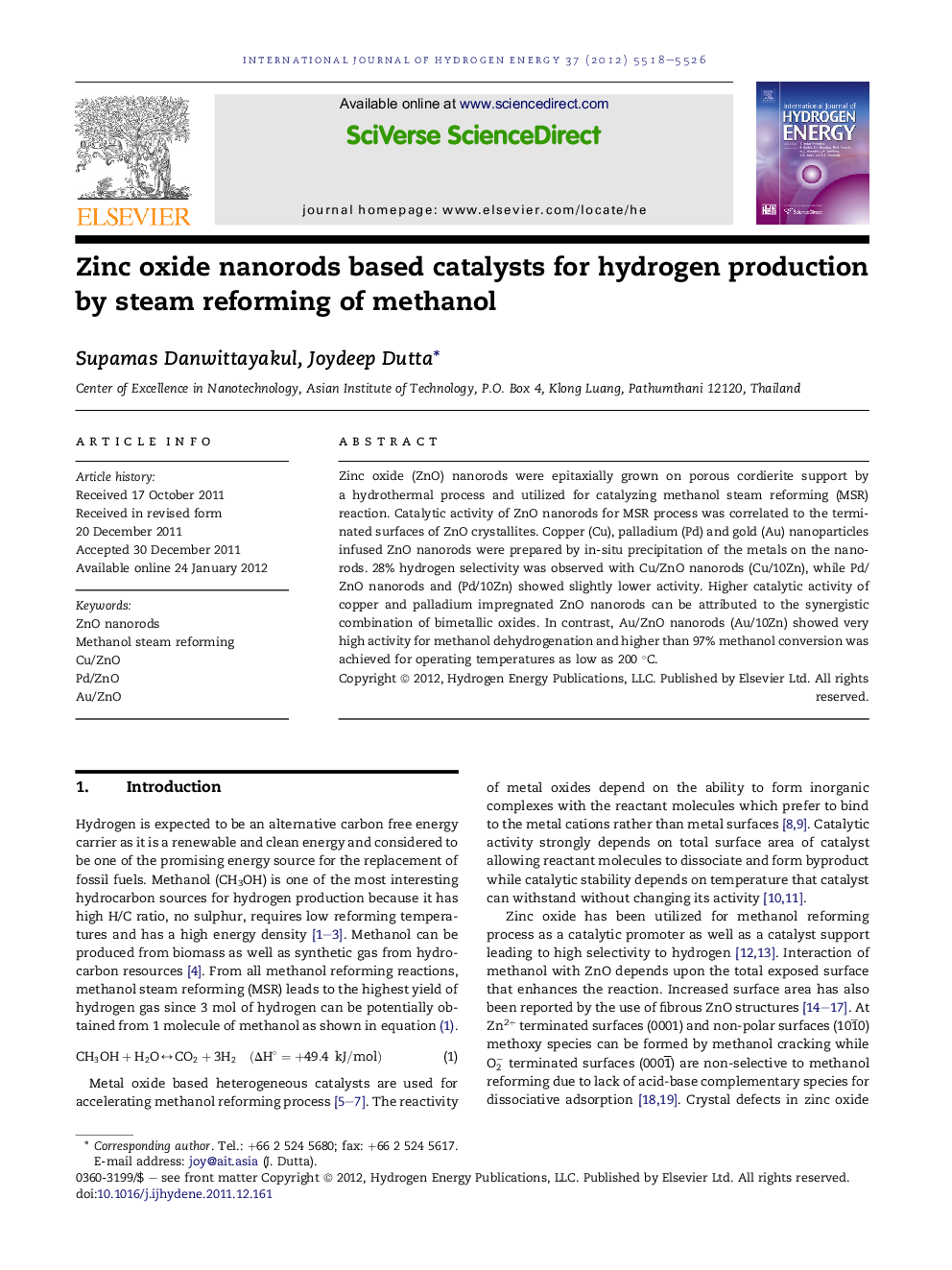| Article ID | Journal | Published Year | Pages | File Type |
|---|---|---|---|---|
| 1276840 | International Journal of Hydrogen Energy | 2012 | 9 Pages |
Zinc oxide (ZnO) nanorods were epitaxially grown on porous cordierite support by a hydrothermal process and utilized for catalyzing methanol steam reforming (MSR) reaction. Catalytic activity of ZnO nanorods for MSR process was correlated to the terminated surfaces of ZnO crystallites. Copper (Cu), palladium (Pd) and gold (Au) nanoparticles infused ZnO nanorods were prepared by in-situ precipitation of the metals on the nanorods. 28% hydrogen selectivity was observed with Cu/ZnO nanorods (Cu/10Zn), while Pd/ZnO nanorods and (Pd/10Zn) showed slightly lower activity. Higher catalytic activity of copper and palladium impregnated ZnO nanorods can be attributed to the synergistic combination of bimetallic oxides. In contrast, Au/ZnO nanorods (Au/10Zn) showed very high activity for methanol dehydrogenation and higher than 97% methanol conversion was achieved for operating temperatures as low as 200 °C.
► Activity of ZnO nanorods for SRM depends on terminated surface of ZnO crystallites. ► Cu/ZnO and Pd/ZnO catalysts show high SRM activity from 200 to 350 °C. ► CO/CO2 can be reduced by increasing reduction temperatures of Pd/ZnO nanorods. ► Au/Zno nanorods was very high active for methanol dehydrogenation (>97% at 200 °C).
